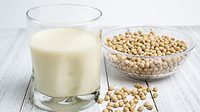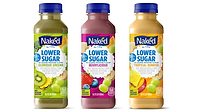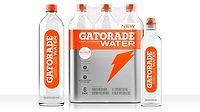Health and wellness trends continue to boost bottled water performance
Consumers turn to bottled water for low price, convenience

Image courtesy of PATH Water
In her 2016 song “Slow Burn,” Kacey Musgraves sings about seeing the beauty in having patience. “I’m alright with a slow burn / Takin’ my time, let the world turn / I’m gonna do it my way, it’ll be alright,” the Texan sings in the chorus. Musgraves’ song is about appreciating a slowdown.
In the beverage industry, the bottled water category remains robust, despite a slowed volume growth.
Michael Bellas, chairman and CEO at Beverage Marketing Corporation (BMC), Wintersville, Ohio, explains that despite bottled water’s slowdown it still is a top beverage choice for consumers.
“The total bottled water market has experienced slower volume growth from middle-single digits to low-single digits since 2022,” he says. “Growth is likely to improve as the economy improves. Overall, it remains the largest beverage category in the U.S. on a volume basis.”
Bellas notes that health and wellness trends have been the primary growth driver for the category. He suspects such trends will continue to be a driver going forward.
“It is the ultimate health and wellness beverage,” he adds.
The chairman and CEO says that bottled water is the best value proposition of any beverage.
“The category has an appeal to value-seeking consumers,” Bellas notes. “But health and wellness is the primary driver.”
Jill Culora, vice president of communications at the International Bottled Water Association, points to data from BMC.
“Bottled water retained its title as America’s favorite packaged drink in 2023, outselling carbonated soft drinks (CSDs) (by volume) for the eighth year in a row, data from BMC shows,” she says. “Bottled water’s total volume sold in 2023 was 15.9 billion gallons, compared to carbonated soft drinks, which sold 11.8 billion gallons.”
Bottled water retail sales passed $48 billion, Culora notes, which is up 6.5% from 2022.
In a February 2024 executive summary report titled “Still and Sparkling Waters – US – 2024,” Chicago-based Mintel’s Food & Drink Analyst Julia Mills stated that bottled water remains popular due to its nutrition and convenience. Mills wrote that, due to price rises, consumers might trade down or opt for premium waters.
Consumers tend to fall back on bottled waters for their perceived safety and better taste compared to tap water. Safety, health and convenience perks will drive continued growth of bottled waters.
“Fixation on hydration forms the foundation for demand for packaged waters as a convenient, on-the-go health boost,” Mills stated in the report. “Consumers tend to fall back on bottled waters for their perceived safety and better taste compared to tap water. Safety, health and convenience perks will drive continued growth of bottled waters.”
She also noted that innovation in the category can be both subtle and impactful.
“Straightforward factors such as low price, portability and inherent benefits (e.g. hydration) are consumer’s primary buying motivators,” Mills stated in the report. “However, opportunities exist to explore flavors, health enhancements and sustainability to keep the category fresh. Key desired attributes must be kept at the center of new product development.”
The report states that financial constraints have led to consumers trading up and down.
“As inflation continues to impact shopping behaviors, a dichotomy emerges in water purchase,” Mills wrote. “Consumers may turn to store brands and larger pack sizes to save money. On the other hand, a desire for aspirational lifestyles may influence trading up to premium waters as an affordable luxury and status signal.”
Additional trends
Along with health and wellness, other trends are contributing to bottled water’s performance.
In the “Still and Sparkling Waters – US – 2024” report, Mintel’s Mills dove into these consumer trends.
She points to Generation Z (Gen Z) and millennials as “engaged category users,” noting that younger consumers are high bottled water users creating “major growth potential” for the overall category.
“A combination of active lifestyles and interest in health, form the primary drivers behind their demand for packaged waters,” Mills stated in the report. “These consumers are most open to riffs on the classics through added flavors and health benefits.”
BMC’s Bellas shares that, while still unflavored water continues to be the majority of bottled water sales, flavor innovation has helped boost the sparkling water segment. He suspects it will continue to impact growth in the sparkling segment going forward.
Bellas also notes that specialty waters have proliferated in the category, but represent a very small share of the overall water beverage market.
In the Mintel report, Mills stated that still and sparkling water use cases deviate.
“Consumers perceive varying water types as suitable for diverse occasions, leading to a necessity for distinctive approaches on positioning,” Mills wrote. “Flavored still and sparkling waters succeed as a drink alternative and ‘social’ beverages.”
She says that enhanced and unflavored bottled waters are recognized as useful for health benefits and exercise. Mills also notes that young consumers are brand loyal and not segment loyal.
“Gen Z and millennials are more dedicated to the preferred water brands than any other generation,” she states in the report. “On the other hand, they are also most open to exploring various water segments. As a result, younger consumers, newer to the category, will prime the market for innovation and revitalize nascent water varieties.”

What’s on the horizon for water
Although it’s impossible to foresee exactly what is next for the category, experts predict that the bottled water category will continue to grow.
BMC’s Bellas suspects steady growth, especially as pricing moderates.
Mintel’s Mills shared market predictions for the category, noting that bottled water sales will continue to ascend “as consumers fall back on it for its perceived superior quality and taste” throughout the year. As for the coming years, Mills noted in the report that Gen Z and millennials will propel the category forward.
“Their interest in added health benefits, sustainability and aspirational lifestyles, will cultivate a demand for premium waters,” the report states. “As these generations decrease their alcohol consumption, sparkling waters will continue to be an appealing alternatives.”
Further, Mintel’s report notes that “maintaining stock for emergencies will situate bottled waters as a must in many consumers’ homes.” Additionally, enthusiasm for sustainability, mainly among younger consumers, will require brands to rethink their sourcing and packaging strategies.
Mills suggested opportunities for the category, one of them being that water acts as a “blank canvas” for enhancements.
“Build off of water’s inherent health benefits through the addition of enhancements for superior hydration, gut health, skin health and beyond,” she wrote. “Consumers aim to extract more benefits from the waters they drink.”
Mills noted that beverage-makers should clearly communicate any additional advantages to persuade consumers that the extras are worth the added costs.
She also explained that the inherent benefits of water should be kept at the core of innovation.
“Hydration and low price are strong purchase drivers in the packaged water category, thus forming barriers to an interest in novel products,” Mills said in the report. “Innovating around health, sustainability and flavor can be successful when benefits are clearly communicated and hydration, value and portability are kept at the core.”
The Mintel analyst stated that brands should explore water’s value in the sober curious category.
“An interest in a sober curious lifestyle grows, spaces open for water brands to step in with alcohol alternatives,” Mills shared. “Water brands can mimic premium packaging and sourcing claims often used by alcohol brands. Furthermore, added health enhancements in water can potentially replicate the feel-good benefits of alcohol sans the hangover.”
Looking for a reprint of this article?
From high-res PDFs to custom plaques, order your copy today!






